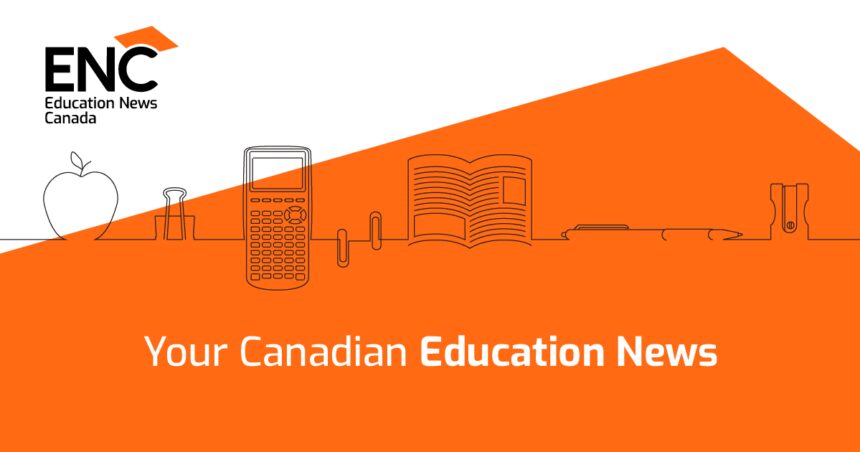As the hectic first month of 2024 comes to a close, Education Minister Caitlin Cleveland sat down yesterday with Northwest Territories education leaders in what officials described as a “collaborative planning session” focused on shared priorities for the remainder of the 2024-2025 school year.
The meeting, held at the Legislative Assembly building in Yellowknife, brought together superintendents from all education authorities across the territory, alongside Indigenous government representatives and department officials. Their discussions centered on how to strengthen the territory’s education system during a period of significant demographic and economic shifts in the North.
“These quarterly gatherings give us the chance to align our approaches and address challenges head-on,” Minister Cleveland told me during a brief interview following the session. “With nearly five months left in this school year, we needed to get everyone at the same table to ensure we’re moving in lockstep on our commitments to students.”
The priorities discussed reflect the territory’s unique educational landscape, where schools serve communities separated by vast distances and diverse cultural contexts. According to meeting documents shared with media, four main areas dominated the agenda: Indigenous language revitalization, mental health supports, teacher recruitment, and technological infrastructure improvements.
Deh Cho Divisional Education Council Superintendent Philippe Brûlot highlighted the continued challenge of staffing schools in smaller communities. “We’re making progress with our northern teacher education programs, but the reality is we still face a 15-20% annual turnover rate in our smaller schools,” Brûlot explained. “Every time we lose an experienced teacher, student learning is disrupted.”
The territory launched its Teacher Recruitment and Retention Strategy last fall, which includes housing incentives and professional development opportunities designed to stabilize the education workforce. Early data from the Department of Education suggests modest improvement, with vacancy rates down 3% compared to the same period last year.
Indigenous language instruction featured prominently in discussions, particularly following the territory’s commitment to increase language programming in schools by 30% over the next three years. Sarah Jerome, a respected language advocate and former education leader from Inuvik, attended as a special advisor to the minister.
“Our languages aren’t just academic subjects—they’re the foundation of identity for our young people,” Jerome emphasized. “What I heard today gives me hope that we’re finally treating language revitalization with the urgency it deserves.”
The meeting occurred against the backdrop of the territory’s recent education performance results, which showed NWT students continuing to lag behind national averages in literacy and numeracy. According to the latest Education Results Report, only 52% of NWT students are reading at grade level by the end of grade 3, compared to the national average of 76%.
Minister Cleveland acknowledged these challenges but pointed to several initiatives she believes will help close the gap. “We’ve expanded our Northern Distance Learning program to three additional communities this year, bringing quality instruction to students who previously couldn’t access certain courses,” she noted. “And our new literacy framework is showing promising early results in pilot schools.”
Education leaders from the Tłı̨chǫ region shared their experience implementing land-based learning programs, which have shown success in engaging students who struggle in traditional classroom settings. The Department has committed $1.2 million in additional funding to expand these programs across the territory.
Shannon Gullberg, Chair of Yellowknife Education District No. 1, emphasized the need for better mental health resources. “The pandemic’s effects are still very much with us in our schools,” Gullberg said. “Our counselors are seeing unprecedented demand, and we need sustainable funding models for these essential supports.”
In response, the Minister confirmed that mental health training for all education staff will be fast-tracked, with implementation set to begin before spring break.
What struck me most during my observation of the meeting was the spirit of collaboration that prevailed despite the significant challenges facing NWT education. In a territory where politics can often be divisive, education appears to be an area where common ground is more readily found.
As students and teachers return to classrooms following the holiday break, the outcomes of this high-level meeting will soon translate into tangible changes in schools across the territory. Parents can expect to receive detailed communication from their local education authorities in the coming weeks outlining specific initiatives for their regions.
The next quarterly education leadership meeting is scheduled for April, when discussion will focus on planning for the 2025-2026 school year and the implementation of the territory’s new curriculum frameworks.
For NWT’s approximately 8,600 students, these administrative discussions may seem distant from their daily classroom experiences. But as Minister Cleveland emphasized as our conversation concluded, “Every decision we make in these meetings eventually reaches the classroom. Our measure of success isn’t what we agree to in Yellowknife—it’s what improves learning for kids in Fort Smith, Tuktoyaktuk, and everywhere in between.”






